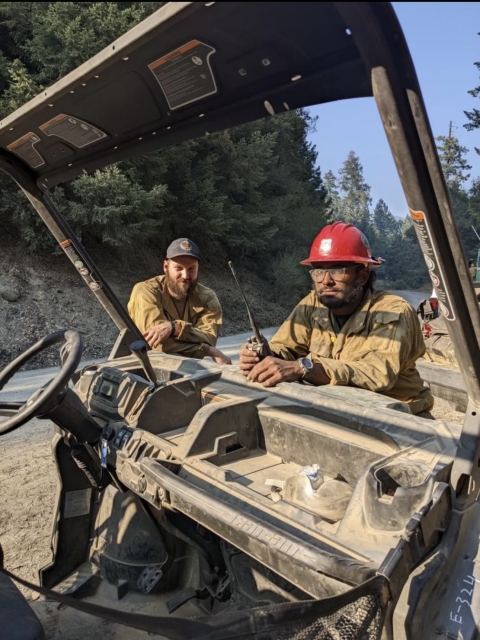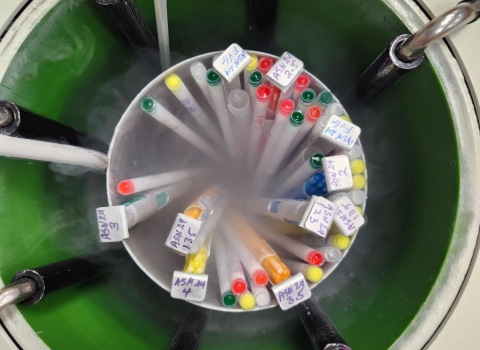The Wildland Fire Apprenticeship Program (WFAP) is an accredited apprenticeship program registered with the Department of Labor and offers opportunities to send entry-level firefighters to an academy to learn the skillsets required to become a wildland firefighter.
“Firefighters who go through the WFAP receive a great mix of education within the classroom and on-the-job,” said Mike Ellsworth, National Training Officer and national representative for the WFAP. Ellsworth’s job is to assist apprentices and supervisors to ensure that apprentices successfully complete the program.
WFAP apprentices attend two to three weeks of classroom learning. There, each student is taught fire behavior, fuels management, lessons learned, human factors, and human performance. In addition, students experience a diverse learning environment of fire management through on-the-job training with handcrews, engines crews, aviation assets, as well as dispatch, prescribed fire, and other fire program elements. Students have up to four years to complete the program and upon completion are converted to a full-time permanent position.
Although the WFAP started in the 1990s, it wasn’t utilized by the U.S. Fish and Wildlife Service (USFWS) until 2021 when the Department of the Interior created a new wildland fire specific position description allowing for entry-level individuals to be hired with the intent of sending them through the apprenticeship program.
Saydee-Marie Fujioka, a current apprentice with the WFAP, previously worked for the U.S. Forest Service and the National Park Service as a wildland firefighter. While out on a suppression assignment, she came across the announcement for the program.
“After reading about the program and the mission of the USFWS, I knew this was what I wanted to do,” said Fujioka. “The USFWS are the new trailblazers in fire. We need to undo what Smokey Bear taught us so long ago. What we really need is more education that putting fire on the ground isn’t a bad thing. Fire isn’t meant to be suppressed. Fire plays an important role in the ecosystem and with the right tactics and prescribed burning, we can bring back and restore native lands and support the agency’s mission to protect habitats and animals.”
Ultimately, Fujioka would like to be a Fire Management Officer and she wholeheartedly believes this program will help her achieve that goal. “My previous work with suppression funded programs didn’t allow me to experience anything other than suppression work. This program has allowed me to experience what it’s like to work with helitack, handcrews, and even dispatch. I already feel like a more well-rounded firefighter.”
Krishna Parthasarathy first heard about the WFAP while in service on the Conservation Corps at Minnesota Valley National Wildlife Refuge. Through his work with the Conservation Corps, he interacted with the fire personnel on the refuge. After they encouraged him to apply for the program, Parthasarathy threw his name into the pot of applicants.
Parthasarathy’s first assignment as part of the WFAP was with the Redding Hotshots in Redding, California. Although the area is well known for its severe fire seasons, the Redding Hotshots serve as a specific developmental leadership crew where crewmembers are provided specific lessons on building self-confidence and leadership abilities they can then bring back to their home units.
“Whenever I tell people I’m a part of this program, I’m either met with support or envy,” said Parthasarathy about the WFAP.
Of his next assignment with Price Valley Helitack Program in Idaho, he says, “I’m looking forward to the ‘infamous rappel mountain week’ and meeting the physical challenges of that. This program has taught me to not be intimidated by the task before me and to say ‘yes’ to exploring all opportunities that come my way.”
Dale McDonald traveled from the deserts of the West to the swamps of the South to join the WFAP at Felsenthal National Wildlife Refuge in Arkansas. Prior to joining the WFAP, his first year on a wildland fire crew was with the Bureau of Land Management in Elko, Nevada. After his first season ended, he traveled the sands of the Nyiri Desert in Kenya in East Africa to teach locals about wildland fire – something he has done twice now.
“For someone who wants a career in wildland fire, this is the program to join,” said McDonald. “WFAP provides a direct route to training and networking that you can’t get anywhere else.”
Dan O’Connor, Fire Management Officer for the Southern California Fire Zone, currently employs six apprentices, the most of any fire zone within the USFWS.
“When I was first starting out in fire, I looked for jobs that offered temporary work so that I could spend my winters traveling or surfing,” said O’Connor. “The world has changed. That sort of lifestyle isn’t achievable anymore due to skyrocketing cost of living across the West. The apprenticeship program provides a path into fire that offers good benefits and stability. In today’s world, it’s a burden to work and then not work and not know when you’ll be employed again. Hiring apprentices has created a more secure and better program. The typical way of hiring seasonal staff left so many gaps in an unpredictable fire season. Now, we have staff all year, making it easier to find a work/life balance and provide fire personnel when needed, regardless of time of year.”
When fire season winds down in Southern California, O’Connor offers his apprentices to other regions across the United States who might need them for fuels work or other fire related projects. If no fires are burning, the apprentices help with refuge related projects at one of the 12 wildlife refuges within the zone.
“Our apprentices never sit around, that’s for sure. If there’s no fire on the ground, they help support nearby refuges by assisting with restoration projects, trail repairs, or other refuge needs,” said O’Connor. “In this way, apprentices not only build relationships with non-fire refuge staff, but they better understand the refuge system and why protecting these places are crucial to the USFWS mission.”
Participation in this program allowed the USFWS wildland fire program to fill 28 positions nationally within the first year.



